When the Sydney Harbour Bridge opened in 1932 it linked the northern and southern shores of Sydney Harbour in a single span. This engineering marvel signified a new, progressive urban identity for Australia. It quickly became a symbol to promote tourism and immigration. The bridge takes centre stage in Sydney's New Year's Eve celebrations, with images beamed across the world.
More on the Sydney Harbour Bridge
The opening of the bridge marked the end of almost a century of speculation about a harbour crossing.
Bidjigal woman Esme Timbery's stunning creations in the La Perouse tradition.
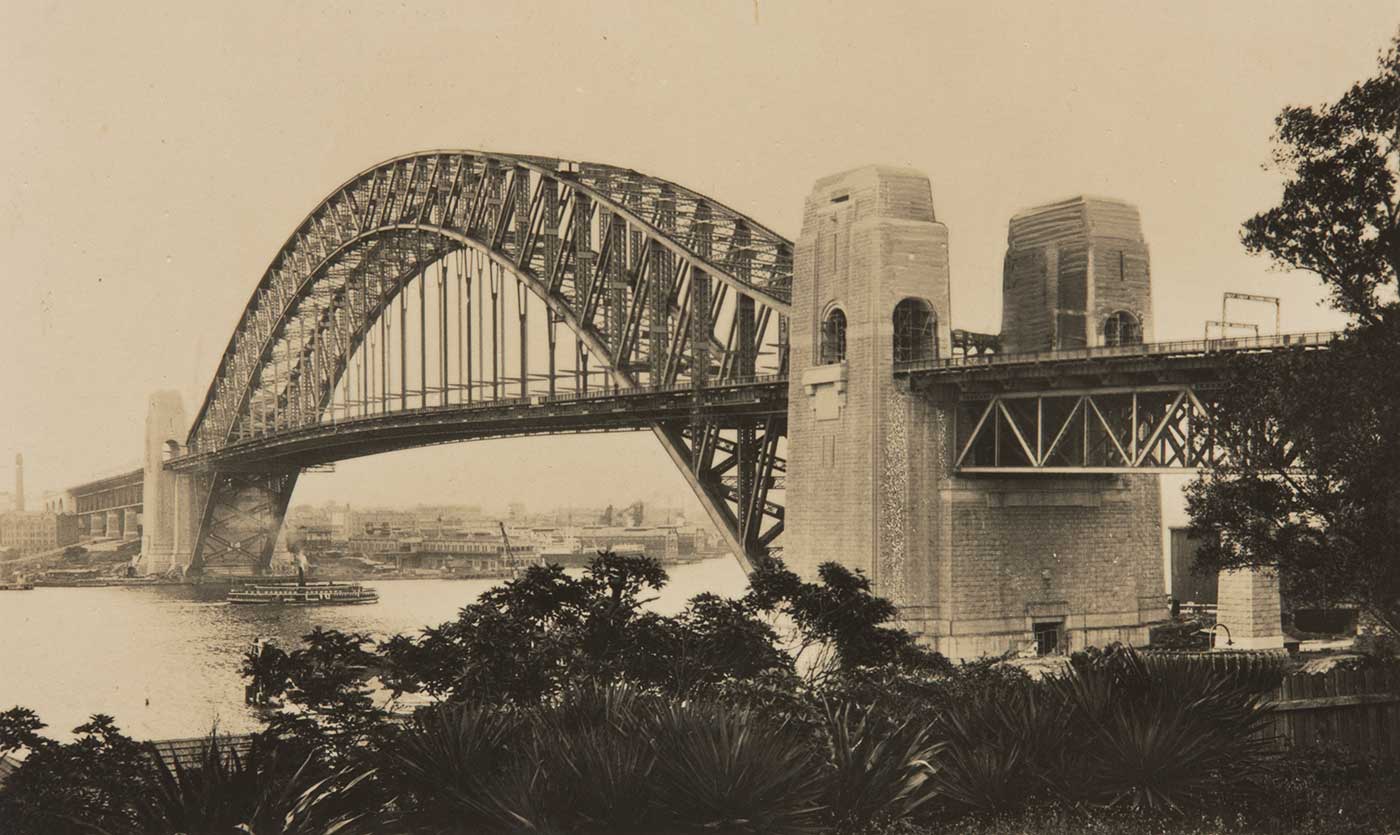
Sydney Harbour Bridge, 1932
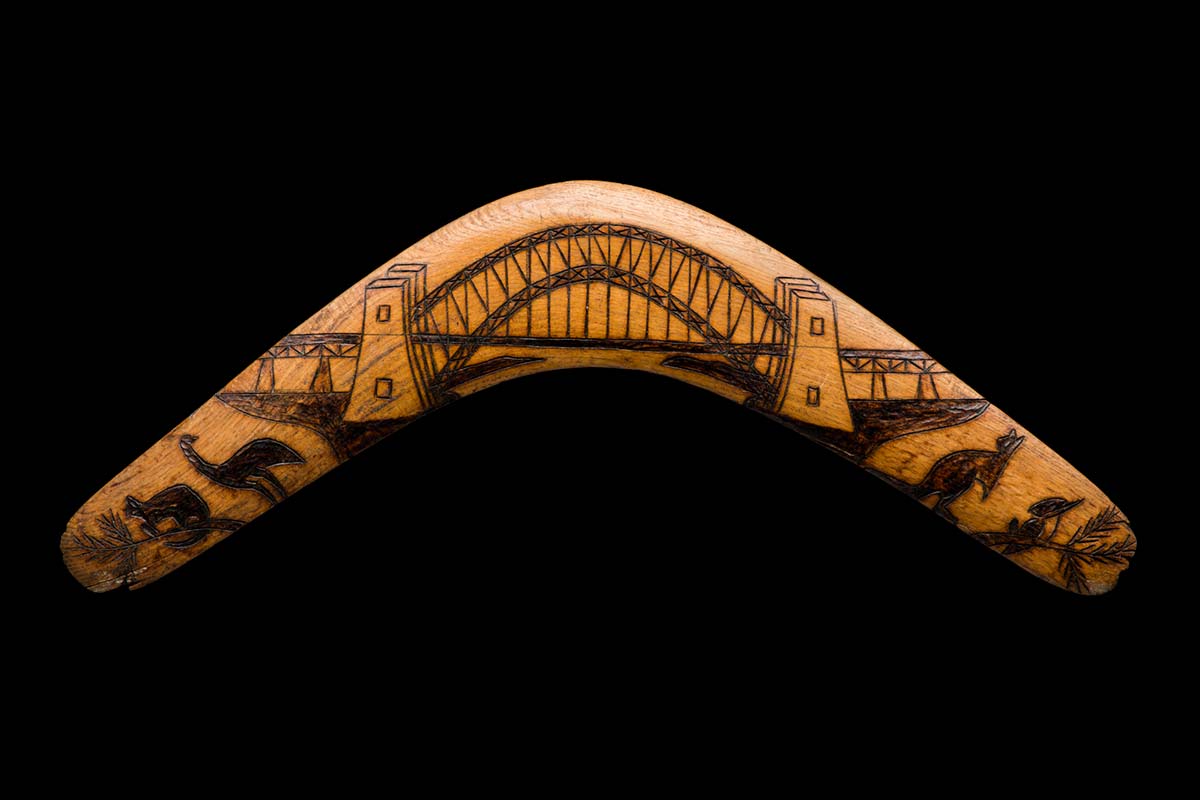
Boomerang depicting the Sydney Harbour Bridge, unknown maker, La Perouse
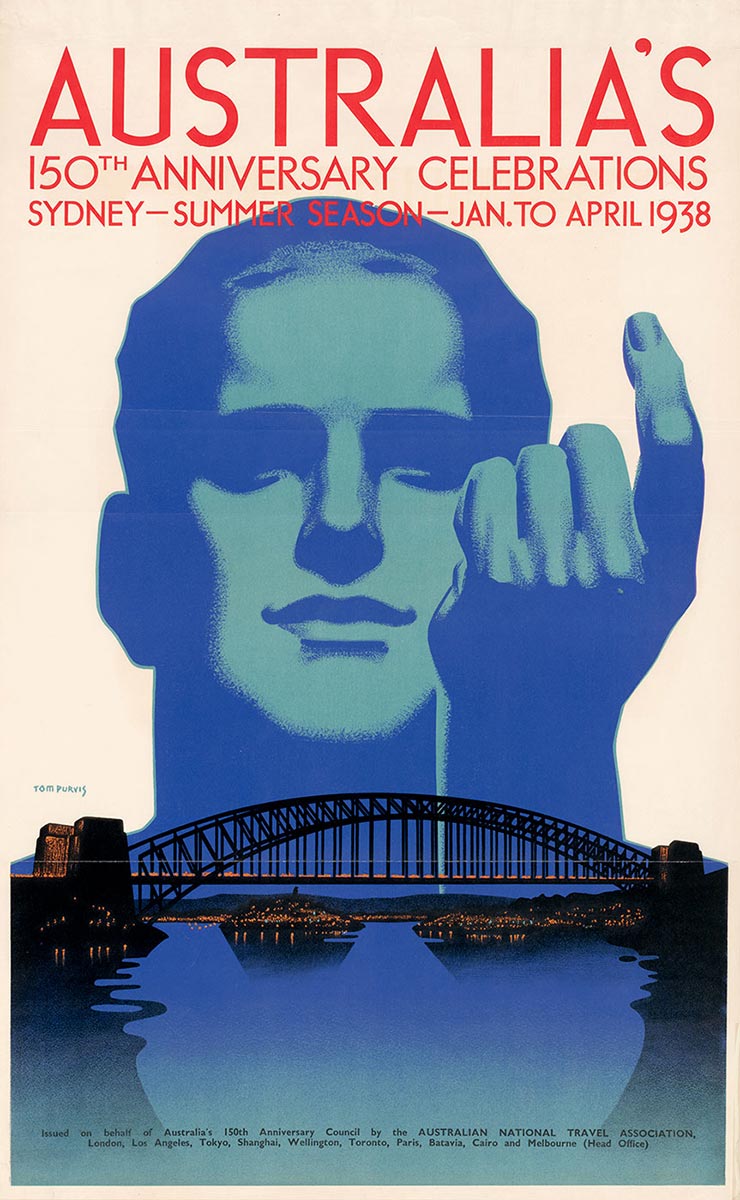
Australia's 150th anniversary celebrations poster by Tom Purvis, 1938
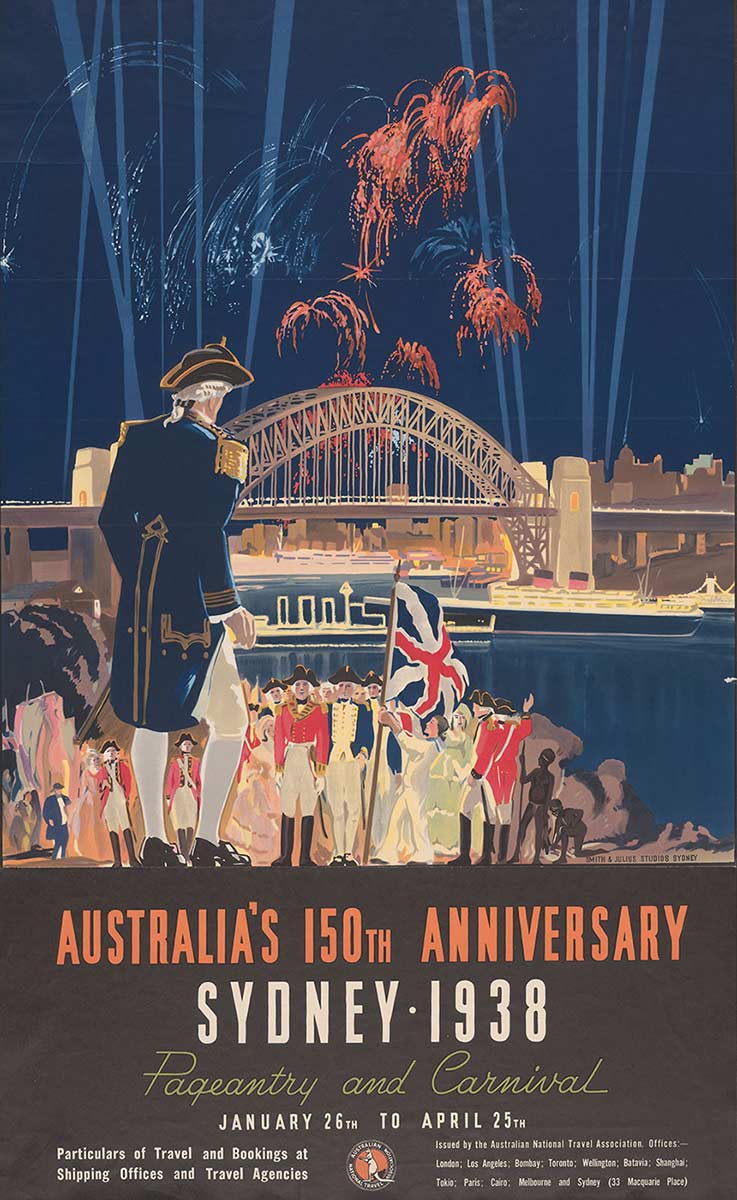
'Australia's 150th birthday. Pageantry and Carnival' poster, 1938
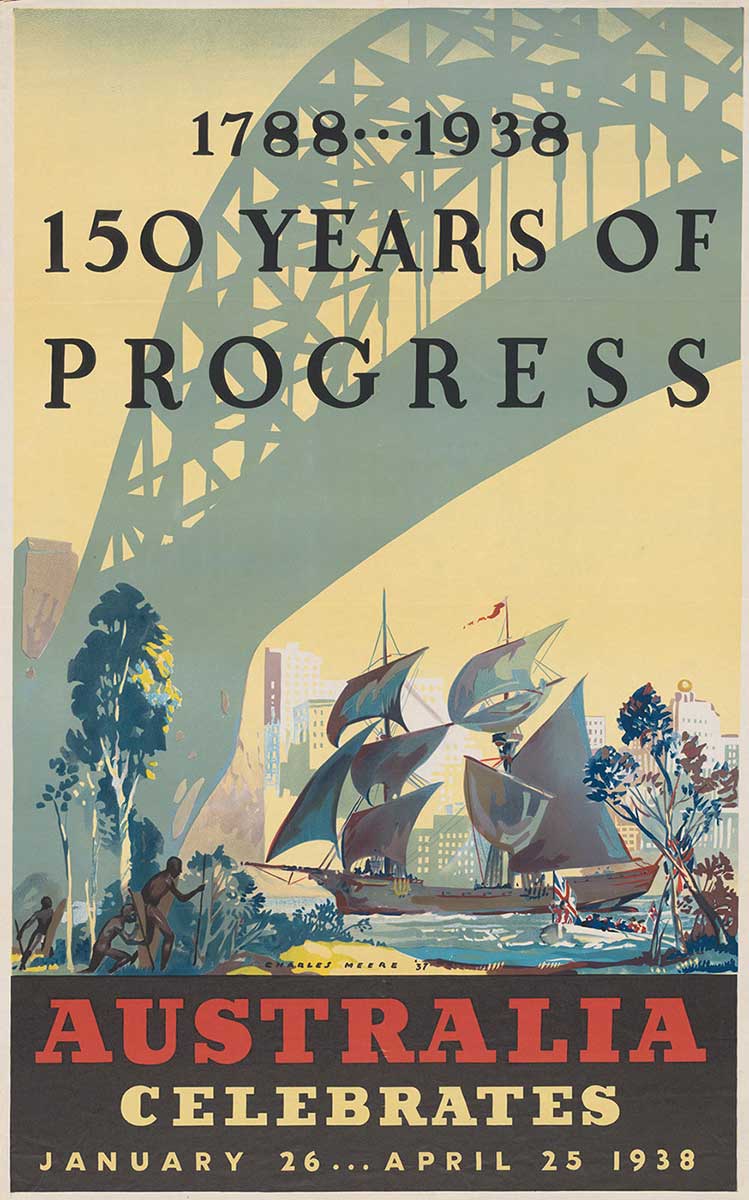
'150 years of progress. Australia celebrates' poster by Charles Meere, 1938
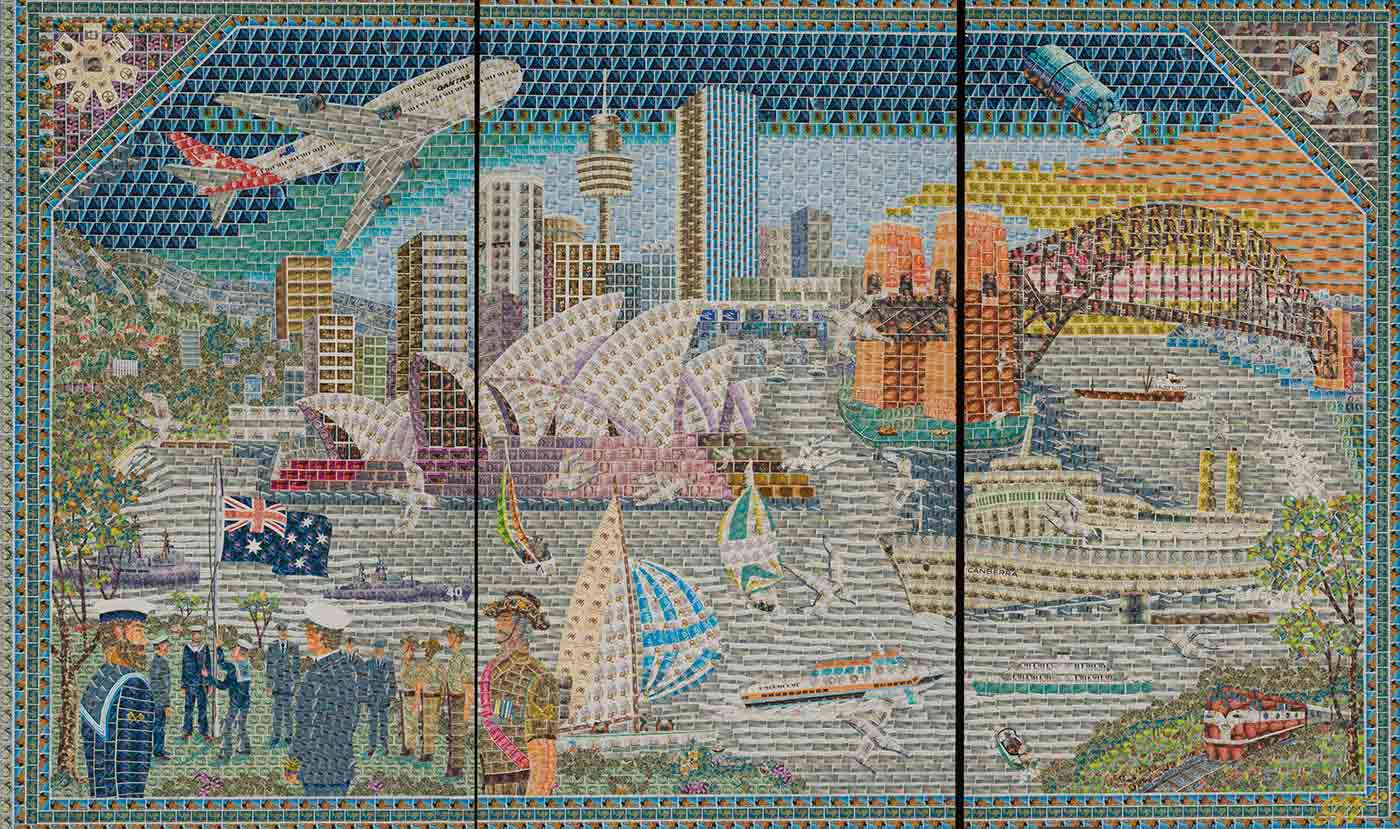
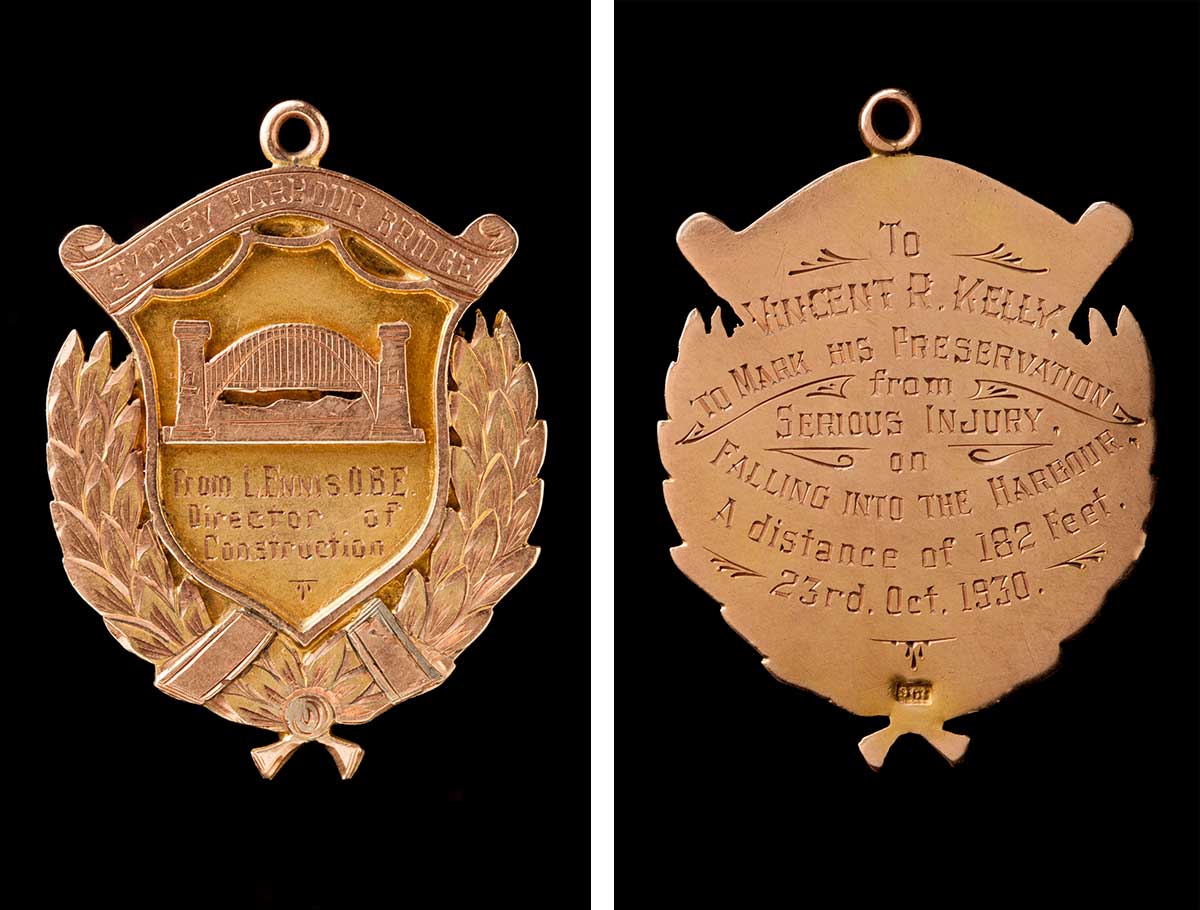
Medal presented to Vincent Kelly after he survived a fall from the Sydney Harbour Bridge, 1930
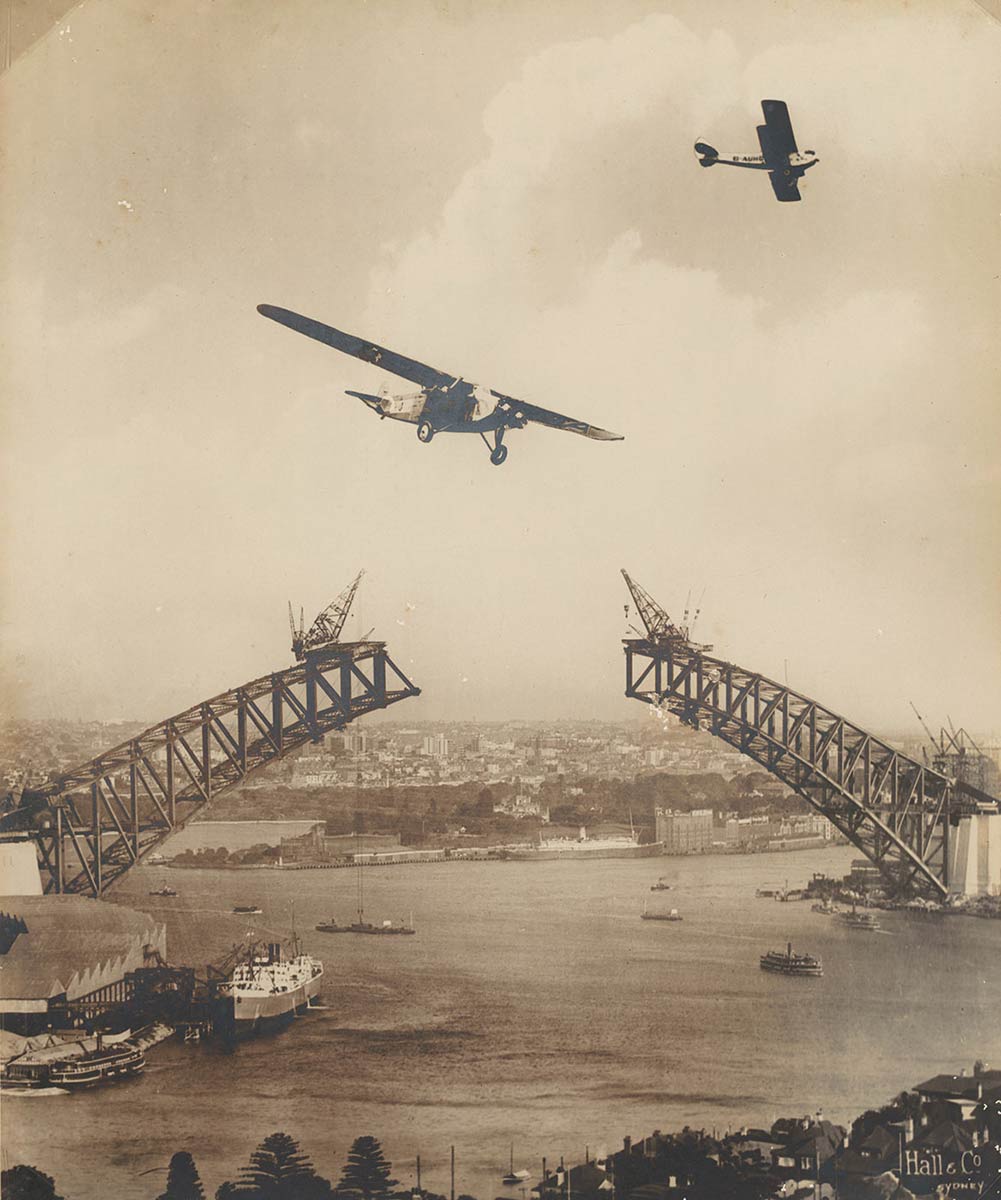
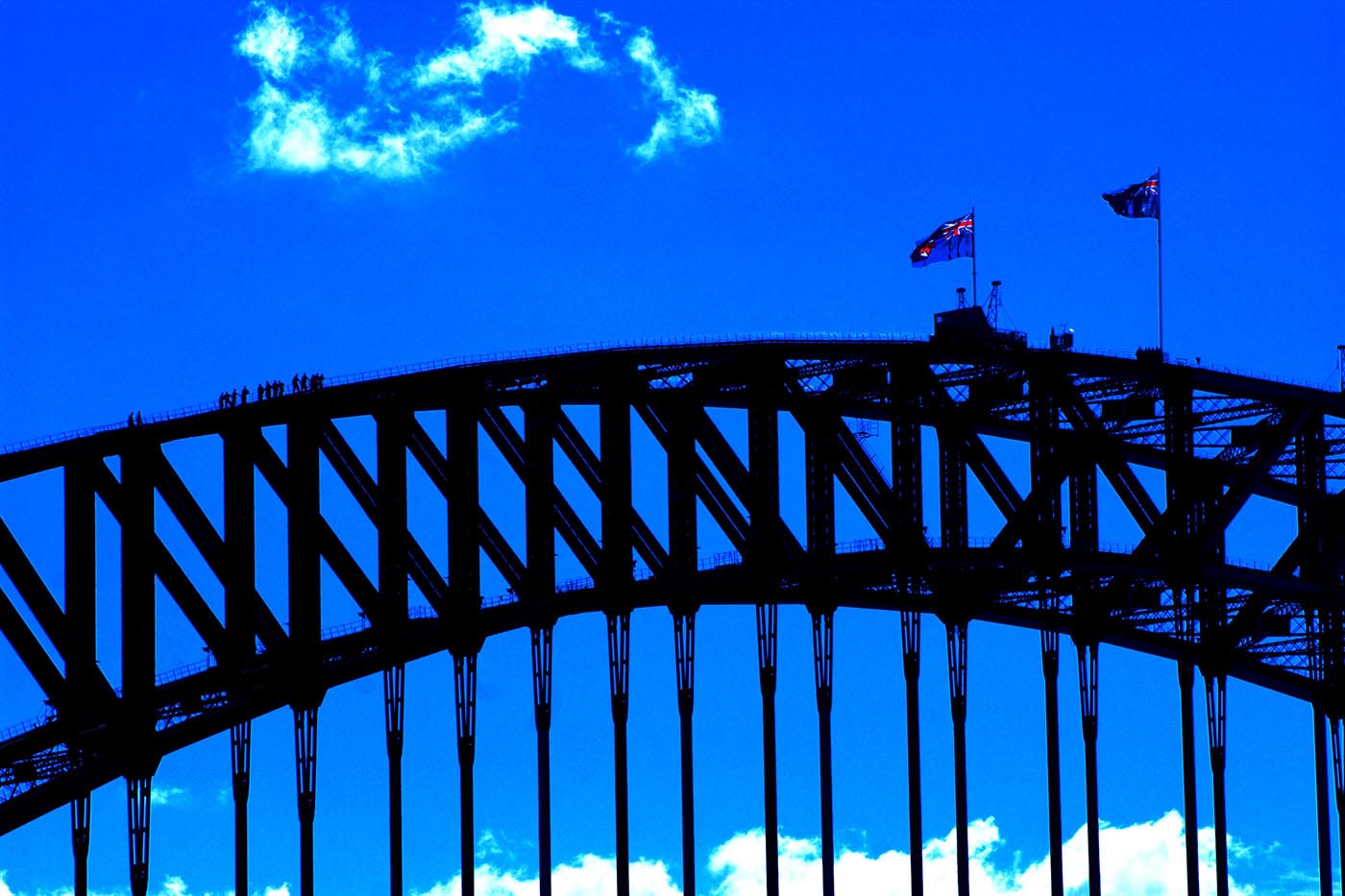
Bridge climb
Engineering marvel and symbol of progress
Construction of the Sydney Harbour Bridge spanned almost a decade, from 1923 to 1932. The bridge was formally opened on 19 March 1932 by New South Wales Labor Premier Jack Lang. Controversially, Francis de Groot, a member of the New Guard right-wing paramilitary group, rode his horse through the crowd and cut the ribbon first. The New Guard was opposed to Lang's socialist policies and resentful that King George V had not been invited to open the bridge.
On its completion the Sydney Harbour Bridge became a symbol of Australian progress, modernity and ingenuity. It was used to promote 150 years of British settlement and was a central feature of many Australian tourism and immigration campaigns.
Since 1998, Sydney's New Year's Eve celebrations have climaxed with fireworks displays from the bridge. Now shown around the world, these celebrations build on the international exposure the bridge, as an Australian symbol, received during the Sydney Olympic Games in 2000.
The Harbour Bridge and the nearby Sydney Opera House are considered Australia's most distinctive urban structures. Ironically, the bridge has also come to symbolise the frustrations of commuting in Sydney, with traffic congestion and road tolls an established part of 'modern' life.
Bridging the gap between communities
The Sydney Harbour Bridge also became a symbolic bridge between black and white Australians when crossed by an estimated 250,000 people during the People's Walk for Reconciliation on 28 May 2000.
The bridge was closed to commuters to allow people to walk across in a show of celebration and support for the continuing process of Aboriginal reconciliation. The Sydney walk was followed by bridge walks in cities and towns across Australia. These symbolic acts signified the willingness of First Nations and non-First Nations Australians to work together to bridge the gap between their two communities.
In our collection